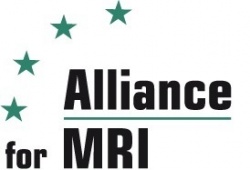Continued access to MRI for patients in Europe
The Alliance for MRI welcomes the European Parliament's approval of a derogation for Magnetic Resonance Imaging (MRI) in its draft report on the revised Directive on Protecting Workers from Exposure to Electromagnetic Fields.

The approval of this derogation is in line with the first reading political agreement reached by Council and Parliament in April this year, following in-depth informal discussions after the Committee vote in December 2012.
"Today's approval by the Plenary marks a milestone towards revising an erroneous European directive before it enters into force. In its old form, the Directive would have prevented patients from benefiting from MRI used in the diagnosis and treatment of their life-threatening diseases" remarked Professor Gabriel Krestin, former President of the European Society of Radiology.
The derogation for MRI is vital, as the revised exposure limits for workers in the proposed Directive would have prohibited the use of MRI in areas such as MRI-guided surgery (for example brain surgery) and in imaging vulnerable patients and children, where closer patient contact is required. New research and developments in MRI would have also been severely restricted, as would routine cleaning and maintenance of MRI equipment.
Mary Baker, President of the European Brain Council said: "The derogation for Magnetic Resonance Imaging that was endorsed by the Parliament today will ensure that serious brain conditions such as Parkinson's or Alzheimer's will be diagnosed and treated to the benefit of patients in Europe. I am grateful that Members of the European Parliament have followed our arguments, enabling patient access to MRI whilst fully respecting the safety needs of health professionals working with the equipment. I now hope for a speedy adoption of the revised Directive by Member States." Following today's Plenary vote, the Council is expected to adopt its official position, in line with the First Reading Agreement from April, as soon as possible.
Background
The Alliance for MRI is a coalition of European Parliamentarians, patient groups, leading European scientists and the medical community, who together are seeking to avert the serious threat posed by EU health and safety legislation to the clinical use of, and research into, magnetic resonance imaging (MRI).
The Alliance for MRI was officially launched in March 2007 in response to the pending implementation of the EU Physical Agents 2004/40/EC (on electromagnetic fields) in April 2008. The Alliance was founded by the European Society of Radiology, the European Federation of Neurological Associations and Dr. Hannes Swoboda MEP, Chair of the Socialist Group in the European Parliament.
In October 2007, the European Commission proposed extending the implementation deadline from April 2008 to April 2012, to allow more time for the evaluation of new data on electromagnetic fields and their short-term effects on the human body. As a result, the European Commission published a new proposal in June 2011 revising Directive 2004/40/EC in order to exempt MRI from the exposure limit values. The MRI safety is already ensured through the MR safety standard IEC/EN 60601-2-33 (harmonised through the European Medical Devices Directives) which defines criteria for minimising physiological effects due to exposure to time-varying electromagnetic fields for patients and workers.
MRI is a diagnostic technique that uses radio and magnetic waves to produce images of unrivalled quality, particularly of soft tissues that are not well depicted using X-rays. It is essential for the diagnosis and treatment of life-threatening diseases such as cancer, heart disease and brain disorders. MRI is used for mapping brain functions prior to surgery for diseases such as epilepsy and to advance our understanding of how the brain works. New cutting-edge diagnostic and treatment techniques such as MRI-guided surgery are constantly being developed, leading to improved patient outcomes.
12.06.2013











